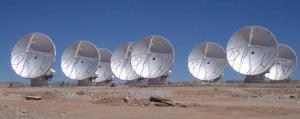Blog
Open Skies
29 June 2015
 ALMA
ALMAAs we’ve been traveling across Chile, we’ve seen billions of dollars worth of astronomical equipment. These are big projects, and in the case of ALMA, driven by a large multinational consortium. With all the money and effort put into creating these projects, you might think that the ability to use the facilities would be limited to an exclusive club of astronomers. Surprisingly, it’s not.
There are two things that come into play with big projects such as ALMA, Gemini and CTIO: observing time and data. In order to get observing time, you have to submit a proposal that goes through a review process. There are negotiated amounts dedicated to US, European and Chilean researchers, but there is also some observing time that is “open skies.” That means anyone can apply for that access time. And I mean anyone. You, me, and anyone else on the planet could submit a proposal for observing time. What’s more, you wouldn’t have to pay for that time. If your proposal is approved, you only pay for travel and lodging.
Now it’s true that proposals are extremely competitive, and you would need to have a great deal of skill to make a winning proposal. But you don’t need a degree, nor a university position. These telescopes truly are accessible to the public.
The same is true with the data gathered. In some cases there is a period where a team with observing time gets exclusive access to the data, but eventually it goes into the public domain. Anyone can access it for free. It’s not often in the most user friendly format, but it is available.
New telescopes such as the Large Synoptic Survey Telescope being built near Gemini South take that approach even more seriously, with plans shift away from dedicated observing time and towards immediate release of data to the public. Professional and amateur astronomers alike will have the same access to the data. LSST and other projects become a human endeavor rather.
After all, we all share the same sky, so why not share the same data?